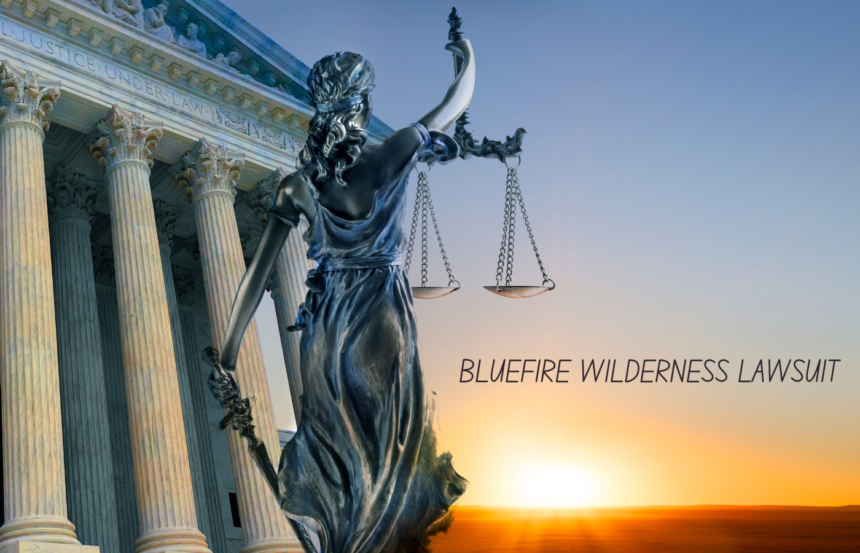The Bluefire wilderness lawsuit has garnered significant attention due to the complexities and serious allegations involved. This article delves into the details of the lawsuit, exploring its background, the key issues at play, and the potential implications for the involved parties.
Introduction
The Bluefire wilderness lawsuit represents a critical moment for the adventure therapy industry. As one of the notable programs offering outdoor experiences aimed at personal development and therapeutic intervention, BlueFire Wilderness has faced serious legal challenges. This article aims to provide a comprehensive overview of the lawsuit, shedding light on its origins, the claims made, and the broader impact on the field of wilderness therapy.
Background of BlueFire Wilderness
What is BlueFire Wilderness?
BlueFire Wilderness is a therapeutic program designed for adolescents and young adults. It combines outdoor adventures with therapeutic practices to help participants overcome personal struggles, improve mental health, and develop life skills. The program has been lauded for its innovative approach but has also faced scrutiny over its methods and outcomes.
History and Development
BlueFire Wilderness was established with the mission of providing a unique therapeutic environment. Over the years, it has expanded its services and built a reputation within the adventure therapy community. However, its rapid growth has not been without controversy, leading to the current Bluefire wilderness lawsuit.
The Origins of the Bluefire wilderness lawsuit
Initial Allegations
The Bluefire wilderness lawsuit began with allegations of misconduct, including claims of inadequate care, negligence, and mistreatment of participants. These accusations were made by former participants and their families, who argued that the program failed to meet its therapeutic promises and caused harm instead.
Legal Proceedings
The lawsuit progressed through various legal stages, with both sides presenting evidence and testimonies. The plaintiffs sought compensation for the alleged damages, while BlueFire Wilderness defended its practices and maintained that it provided a safe and effective therapeutic environment.
Key Issues in the Bluefire wilderness lawsuit
Allegations of Negligence
One of the primary issues in the Bluefire wilderness lawsuit is the allegation of negligence. Plaintiffs claimed that the program did not provide adequate supervision and care, leading to physical and emotional harm. This included incidents of injuries during outdoor activities and lack of proper medical attention.
Claims of Misrepresentation
Another significant aspect of the lawsuit is the accusation of misrepresentation. Families of participants alleged that BlueFire Wilderness made false promises about the effectiveness of its program and the qualifications of its staff. These claims suggested that the program misled families about the potential benefits and safety of the wilderness therapy.
Regulatory Compliance
The Bluefire wilderness lawsuit also raised questions about regulatory compliance. Critics argued that the program did not adhere to industry standards and regulations, compromising the safety and wellbeing of its participants. This aspect of the lawsuit brought attention to the need for stricter oversight and regulation of wilderness therapy programs.
Implications of the Bluefire wilderness lawsuit
Impact on Participants and Families
The lawsuit has had a profound impact on the participants and their families. Those who claimed to have suffered harm sought justice and compensation, while others questioned the legitimacy of their experiences. The emotional and psychological toll on the involved families cannot be understated.
Effects on BlueFire Wilderness
For BlueFire Wilderness, the lawsuit posed a significant challenge to its reputation and operations. The program faced increased scrutiny, potential financial liabilities, and a loss of trust among prospective clients. The outcome of the lawsuit could determine the future viability of the program.
Broader Industry Impact
The Bluefire wilderness lawsuit has broader implications for the wilderness therapy industry as a whole. It highlighted the need for transparency, proper training, and regulatory oversight. Other programs may need to reevaluate their practices to avoid similar legal challenges and ensure the safety and wellbeing of their participants.
Potential Outcomes of the Bluefire wilderness lawsuit
Settlements and Compensation
One potential outcome of the Bluefire wilderness lawsuit is a settlement, where BlueFire Wilderness might agree to compensate the plaintiffs without admitting wrongdoing. This could provide financial relief to the affected families and potentially allow BlueFire Wilderness to continue operating with changes to its practices.
Court Rulings and Precedents
If the case goes to trial, the court’s ruling could set important precedents for the wilderness therapy industry. A ruling against BlueFire Wilderness might lead to stricter regulations and higher standards for similar programs. Conversely, a ruling in favor of BlueFire Wilderness could reinforce the legitimacy of its methods and practices.
Future of Wilderness Therapy Programs
The lawsuit’s outcome will likely influence the future of wilderness therapy programs. Increased awareness and scrutiny could drive improvements in the industry, ensuring that therapeutic programs provide safe and effective care. It may also prompt regulatory bodies to implement more rigorous oversight and standards.
Frequently Asked Questions
What are the main allegations in the Bluefire wilderness lawsuit?
The main allegations include negligence, misrepresentation, and failure to comply with regulatory standards, leading to harm to participants.
How has the Bluefire wilderness lawsuit impacted the program’s reputation?
The lawsuit has significantly affected BlueFire Wilderness’s reputation, leading to increased scrutiny and potential loss of trust among prospective clients.
What are the possible outcomes of the Bluefire wilderness lawsuit?
Possible outcomes include settlements, court rulings, and changes to industry regulations and standards.
Why is regulatory compliance a significant issue in the Bluefire wilderness lawsuit?
Regulatory compliance is crucial as it ensures the safety and wellbeing of participants in wilderness therapy programs. The lawsuit highlights the need for stricter oversight.
How might the lawsuit affect the wilderness therapy industry?
The lawsuit could lead to increased scrutiny, higher standards, and more rigorous regulatory oversight across the industry.
What is BlueFire Wilderness known for?
BlueFire Wilderness is known for its combination of outdoor adventures and therapeutic practices aimed at helping adolescents and young adults.
Conclusion
The Bluefire wilderness lawsuit serves as a critical case for understanding the complexities and challenges within the wilderness therapy industry. It underscores the importance of ensuring safety, transparency, and regulatory compliance in therapeutic programs. As the lawsuit progresses, its outcomes will likely shape the future of wilderness therapy, emphasizing the need for high standards and robust oversight to protect participants and restore trust in these valuable therapeutic interventions.









